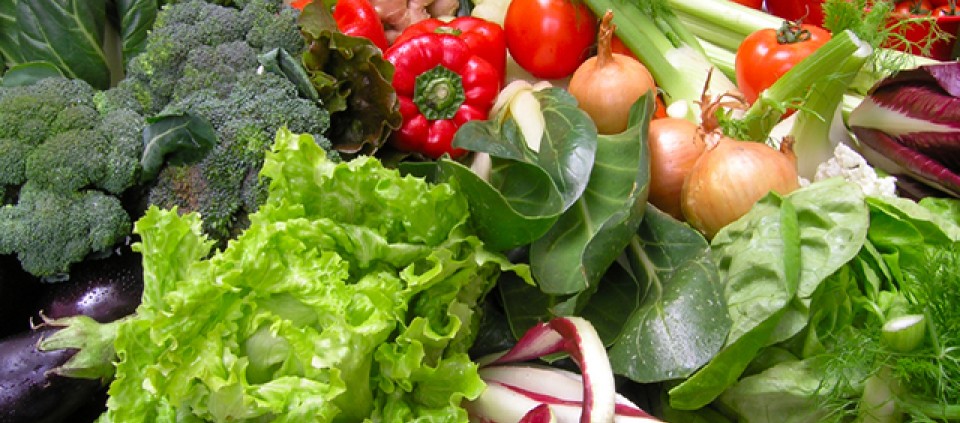Un-Junk Your Food

All calories are not created equal. The main difference is in how our body uses calories. Calories from protein have a different effect than calories from carbohydrates—and even among carbohydrates, calories from wheat might be utilized differently than, say, calories from a sweet potato. The key to these differences is a combination of the nutrition profile of the food and your unique physiology.
The calorie content of a food is determined by the energy given off by burning that food in a controlled environment called a calorimeter. However, human bodies are not controlled environments; we are complex, dynamic systems, responding to changes in both our external and internal environments. Hormones, inflammation, exercise, and genetics can affect how the body utilizes calories.
Thankfully, food is so much more than mere calories. It has the potential to provide therapeutic benefits, change cellular messaging, alter the expression of certain genes, and determine whether or not a particular disease progresses.
Food is …
Nourishment. Ideally, the calories we consume provide nourishment. In health and nutrition circles, we grade foods based on vitamins and minerals to determine how nourishing they are. Another avenue for nourishment, which doesn’t get much press, are phytochemicals—plant-based chemicals that have far-reaching positive physiological benefits. A 100-calorie snack pack of cookies doesn’t contain phytochemicals, but a 100-calorie banana does. When a client comes to see me wanting to reduce calories, we shift the perspective toward increasing nourishment instead.
Communication. Food has the potential to be health promoting or health inhibiting. Sugar, trans fats, and chemically derived ingredients are health inhibiting. They disrupt the cellular communication processes that keep us balanced and well. Foods like brightly colored fruits and vegetables enhance health-promoting cellular communication via the action of their unique phytochemicals. Research shows that certain phytochemicals, like those found in orange and yellow foods, boost the immune system, while foods that are red, blue, and purple aid memory and protect us from free-radical damage during the aging process. (Artificial food coloring doesn’t count and, in fact, the Center for Science in the Public Interest released a report showing the detrimental effects of such food additives.)
Healing. Inflammation is the driving factor behind many diseases, including heart disease and cancer, and phytochemicals are key to mitigating the effects of inflammation, quelling the damage induced by the stresses of day-to-day living (i.e., exposure to environmental toxins and food-based toxic ingredients).
Tips for Un-Junking Your Food
1. Be discriminating: Increase the quality of your calories.
Remove junk ingredients from your diet, including artificial colors, artificial sweeteners, high-fructose corn syrup, hydrogenated and partially hydrogenated oils and trans fats, MSG, and even “natural” flavorings, which are actually created in a lab.
Add in “jewels”—foods that are rich, brightly colored (by nature!), micronutrient dense, and chemically (and genetically) unadulterated. These foods are not only richer sources of vitamins, minerals, and phytochemicals, but are also less taxing for your body to process. Some of my favorite jewel foods include lacinato kale, berries, sweet potatoes, and avocadoes. Spices and herbs are also rich sources of phytochemicals.
2. Be gentle: Utilize moderate cooking methods.
Cooking foods at high temperatures for long periods of time creates unhealthy molecules that are damaging to our cells. And it’s not just meat—grilling, roasting, toasting, or baking plant-based carbohydrate foods (like potatoes and grains) at high temperatures yields acrylamides, which studies show may cause cancer. As they are found naturally in certain foods, avoiding acrylamides is virtually impossible, but roasting and toasting to a golden-yellow color rather than brown and avoiding fried foods help minimize our exposure. I would be remiss if I didn’t talk about cooking with oils: Anytime an oil is heated above its smoking point, it begins to deteriorate, compromising both its nutritional integrity and your health So if your pan is smoking after you add the oil, discard it safely and start over! A rule of thumb is the lighter the color of the oil, the higher the smoke point: Spectrum Organics has a great chart.
Sometimes it’s not the food that’s full of junk but the pot or pan we cook it in. Dispose of any Teflon pans with scratches or peeling. Safer options include stainless steel, enameled or raw cast iron, and—a newcomer to the culinary world—high-density microfine ceramic.
3. Be green: Buy local. Source ethical meat, purchase sustainable fish, and store your food safely.
A recent report stated that organic produce is no more nutritious than conventionally grown produce. While that may be true as far as vitamin and minerals, eating organic is more nourishing. Choosing organic is not so much about what you’re getting, it’s about what you’re not getting. Organic foods contain far fewer pesticide residues. And remember, just because something is labeled USDA organic doesn’t mean that it’s better than a local, unlabeled product: Many small farms may use organic methods but haven’t gone through the certification process.
If you eat beef, choose 100 percent grass-fed and pastured beef—it’s lower in inflammatory omega-6s and contains more anti-inflammatory omega-3s than its conventional, corn-fed counterparts..
Seafoodwatch.org is a good resource for assessing the sustainability and safety of the fish we consume. They have shopping guides for each region of the country.
Plastic storage food containers can leach toxic residues into our food and drink. Swap out your Tupperware for glass storage containers and ditch the plastic water bottles for glass or stainless steel.
© Kripalu Center for Yoga & Health. All rights reserved. To request permission to reprint, please e-mail editor@kripalu.org.